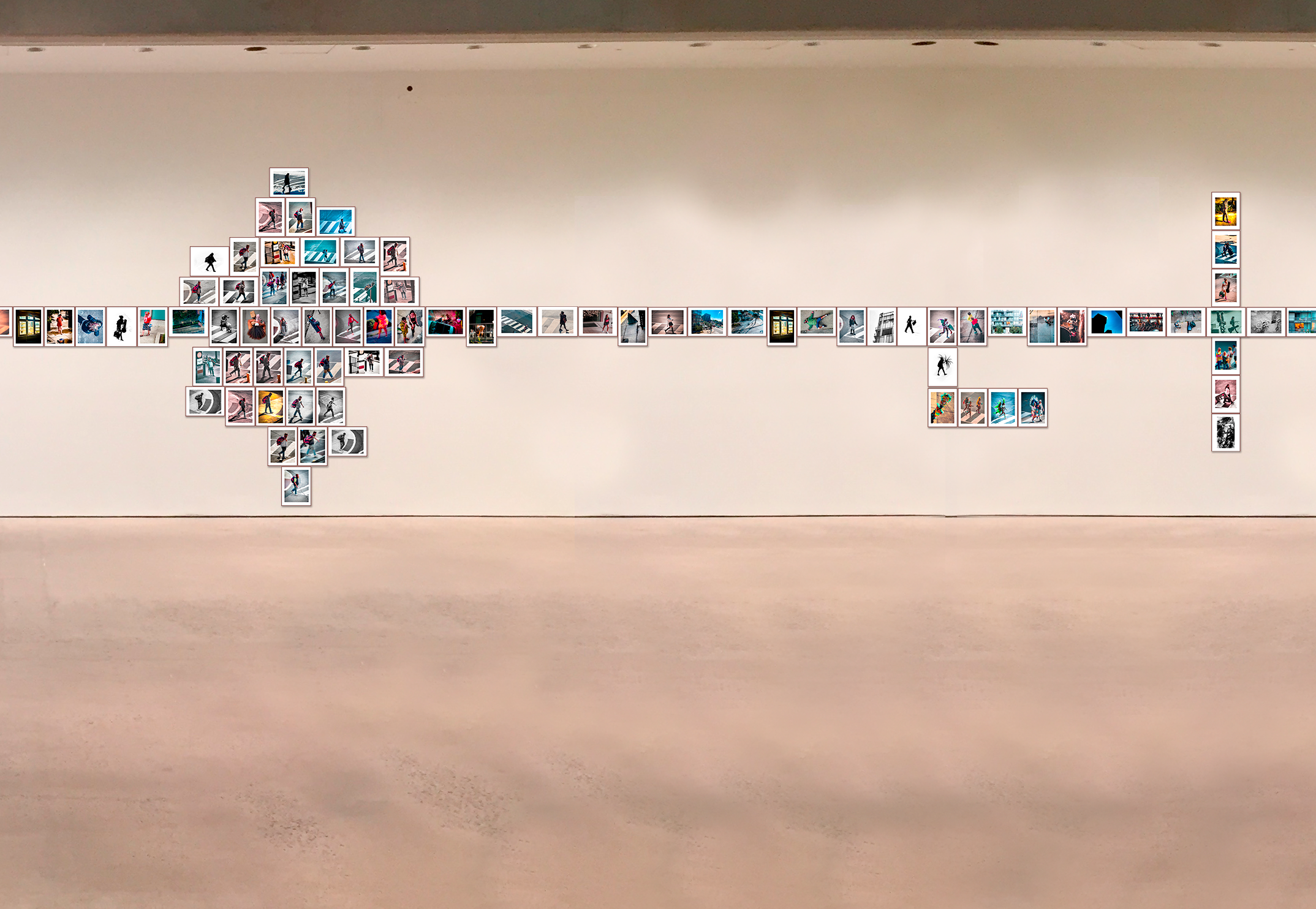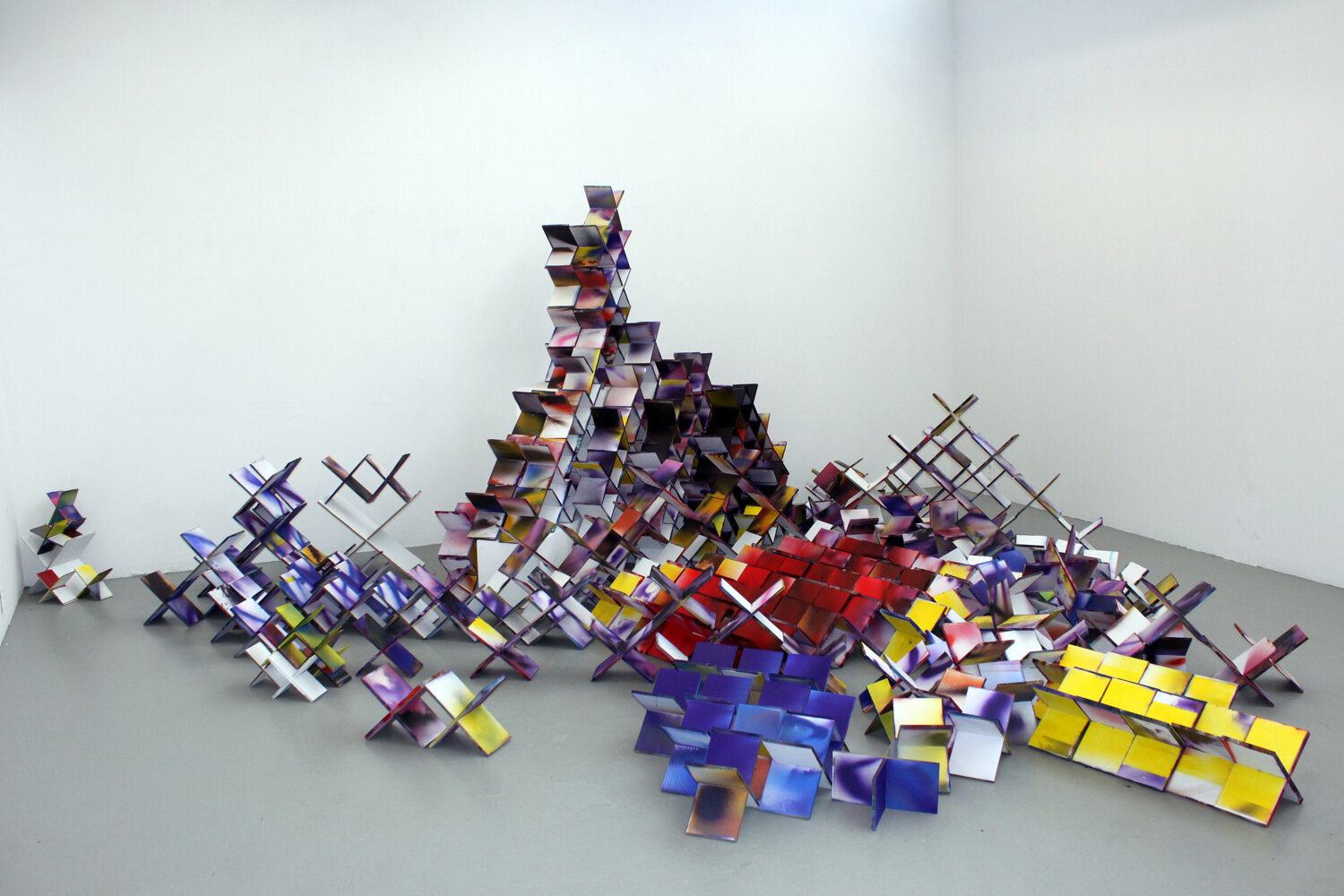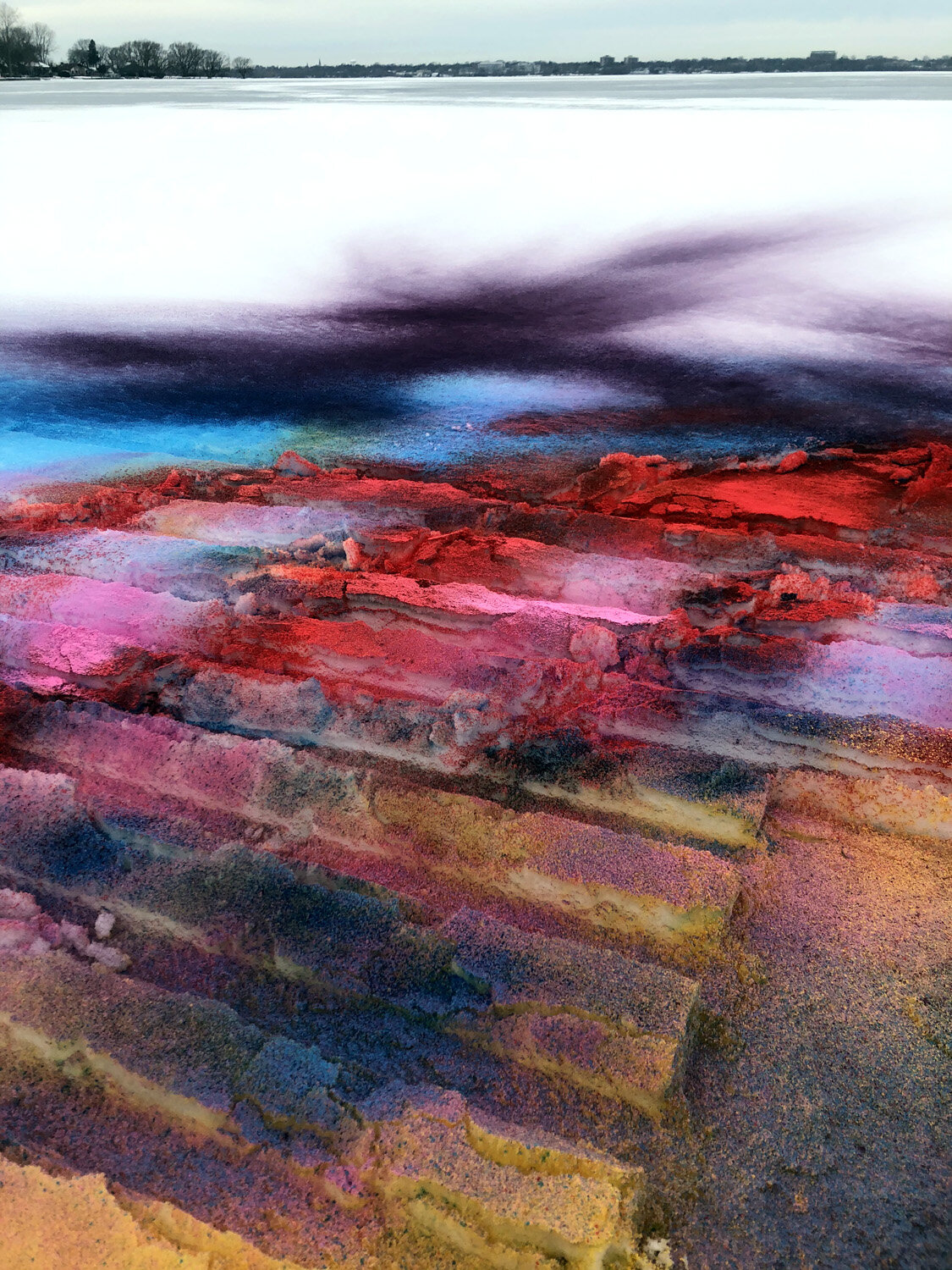Wednesday, November 17, 2010
“NDF” by K.I.A. , 210 objects; variable sizes -- this 8’ x 8’ version is about the smallest version of it...
Each object contains an element of the one next to it. As well, one is industrial; one semi-industrial/organic, one organic. All are white with black.
This installation can be ‘read’ many ways... here’s a quotation from a tribal elder (Lumbee) that sums up the ideas-behind: “...look to the great eagle, the favourite bird of the Great Spirit.The eagle feather is divided into two parts, part light, and part dark. This represents daylight and darkness, summer and winter, peace and war, and life and death...”
One reading, as the objects segue upwards (needles > darts > feathers) is the movement towards enlightenment... a needle can be associated with fear (pain, addiction); a dart with joy (playing); a feather with the spiritual (tribal ceremonies; as a measure weighing against the soul).
However: a needle can bring healing; a dart pain; and a separated feather may mean death (remains of a bird; humans and avian flu...)
And: the objects can also all be seen as simultaneously having the same meaning: protection (against sickness, against an enemy, against cold...)
I’m interested in how something can be two opposing things/ideas at the same time. Which reading, or idea, is true?
The ‘answer’ isn’t either/or, but all.





































